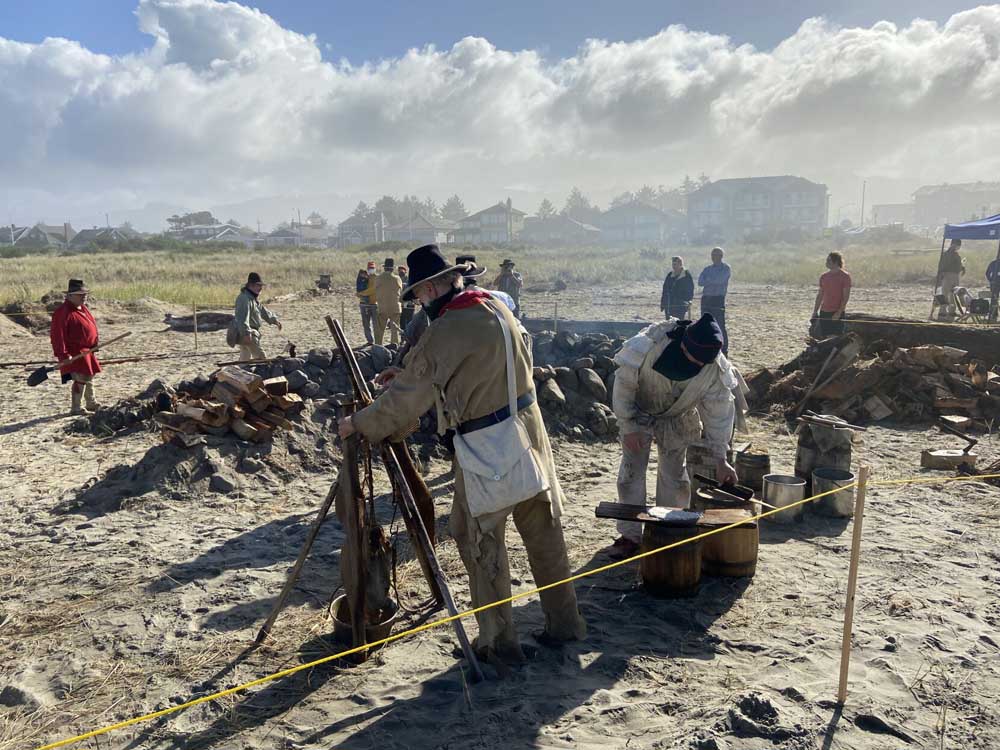Lewis and Clark reenactors create salt in Seaside
Published 1:45 pm Thursday, September 16, 2021

- Salt makers at work near Avenue U in Seaside on Sunday morning.
The beach off U Street was turned into a Disney setting on Saturday and Sunday, as reenactors brought back the spirit of the Lewis and Clark Corps of Discovery.
The corps, made up of 33 volunteers, left St. Louis in May 1804 with the goal of exploring the unknown frontier west. Just after Christmas in 1805, Capt. William Clark sent members of his team to the ocean with the mission to make salt from seawater. It took five days for the men to find a suitable site to build a rock cairn and settle down to make salt, 15 miles south of Fort Clatsop in what is today’s Seaside.
Men in leather jackets and moccasins, wearing leather waist belts and hunting vests, linen overalls and matching frocks performed their tasks in the annual Seaside Museum & Historical Society reenactment.
With dry conditions, the fire marshal asked organizers to clear 50 feet around the fire pit, the area where seawater is boiled down to salt.
Seaside Public Works arrived Friday and carved out this year’s encampment.
Fifty visitors turned out in the first hour of the event, said museum board president Steve Wright. It was the first time in years, he said, that he could remember sunny skies on the annual event, a reenactment of the 1805-06 of the expedition.
Reenactors wore black head scarves, as an homage to the original voyage but also as a protective measure in the modern age of the coronavirus. They carried water buckets of ocean water balanced on wooden yokes. The corps members split wood, built the farm and boiled the water for salt. Three women sewed leather crafts and clothing. Seven men participated in the reenactment, heating the fire, splitting wood and boiling water for salt.
The first Seaside salt emerged for tasting early Sunday morning.
The salt was primarily used to season pork and elk, to be used on the journey back, said reenactor Pvt. George Gibson. Fish was eaten only in “desperation,” and while they did trade with Native Americans for salmon, there is no record of them eating shellfish.
Along with salt making, Gibson and another corpsman entertained the corpsmen with the fiddle. Pierre Cruzatte, a one-eyed French-Indian, was renowned for his musicianship around the campfire.
“He was the primary fiddler,” Gibson said. “I was, well, like a second fiddle.”
Capt. Meriwether Lewis never made it down to Seaside, but Clark did, after a blue whale washed ashore. By the time Clark and his men arrived, the natives had already picked the whale clean. The explorers ended up buying blubber from them after local elk proved too lean.
What did the Native Americans think of the small group of salt makers?
“They thought we were crazy,” reenactor Pvt. John Frazer said. “The Indians didn’t … understand the use of salt. They had all the food that they wanted.”








